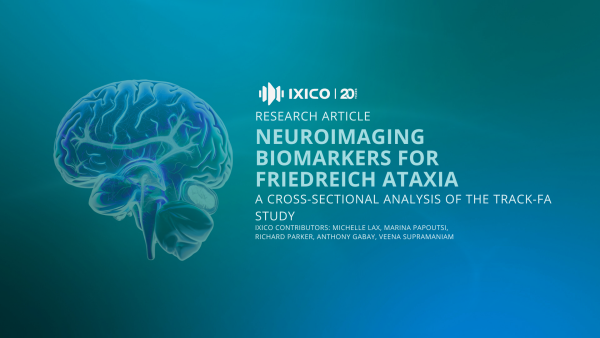Neuroimaging Biomarkers for Friedreich Ataxia: A Cross-Sectional Analysis of the TRACK-FA Study

Neuroimaging Biomarkers for Friedreich Ataxia: A Cross-Sectional Analysis of the TRACK-FA Study
Objective
Our study aims to quantify differences in the brain and spinal cord between individuals with Friedreich's ataxia and healthy controls. This includes stratification by age and disease stage, and for the first time, the inclusion of young children.
Methods
TRACK-FA is the largest prospective, longitudinal, multi-modal neuroimaging study on Friedreich's ataxia to date. We assessed individuals aged 5 to 42 years with Friedreich's ataxia and healthy controls at seven sites across four continents. The study included 17 primary imaging outcome measures (POMs) selected from metrics showing significant longitudinal changes in previous smaller studies. These measures included:
- Brain and spinal cord morphometry (structural MRI)
- Microstructure (diffusion MRI)
- Brain iron levels (quantitative susceptibility mapping)
- Spinal cord biochemistry (magnetic resonance spectroscopy)
This study is registered with ClinicalTrials.gov (NCT04349514).
Results
Between February 2021 and August 2023, we assessed 169 individuals with Friedreich's ataxia and 95 healthy controls. Key findings include:
- Lower volume of the dentate nucleus and superior cerebellar peduncles in individuals with Friedreich's ataxia compared to controls.
- Smaller cross-sectional area of the spinal cord in Friedreich's ataxia patients.
- Lower fractional anisotropy and higher diffusivity in the spinal cord and superior cerebellar peduncles.
- Lower total N-acetyl-aspartate/myo-inositol ratio in the spinal cord.
Morphometric differences in the spinal cord and superior cerebellar peduncles increased dramatically with age during childhood, showing rapid development in controls but not in Friedreich's ataxia patients. Many imaging POMs showed significant associations with clinical severity.
Interpretation
Our findings provide strong imaging evidence of impaired development of the spinal cord and superior cerebellar peduncles during childhood in Friedreich's ataxia. This opens the way for the use of neuroimaging biomarkers in clinical trials.
Read the full article here